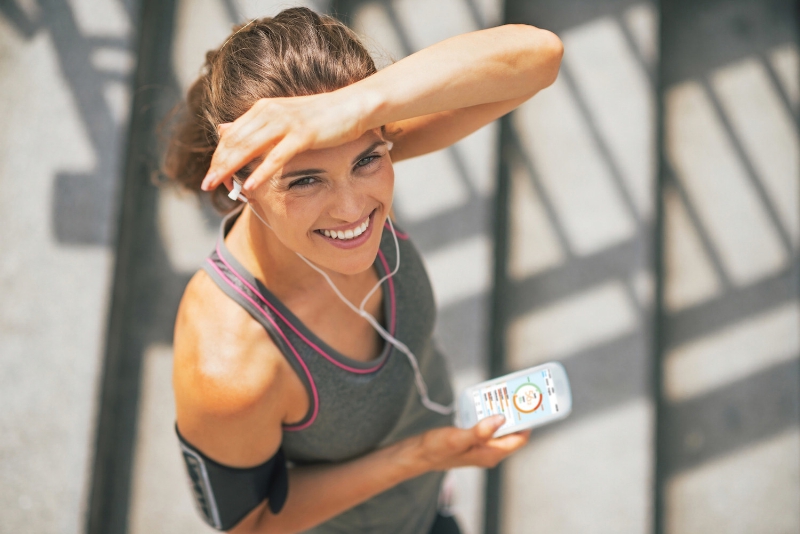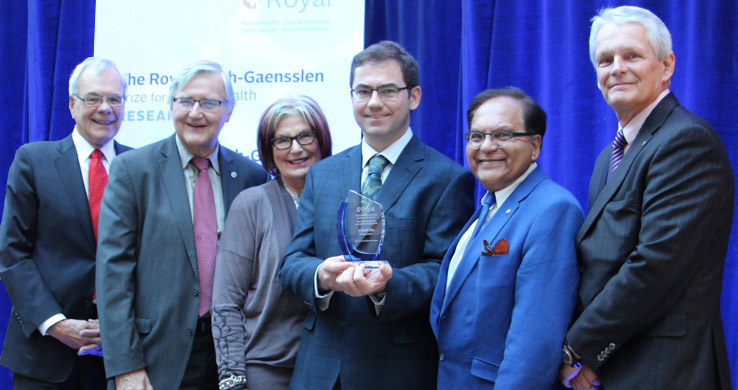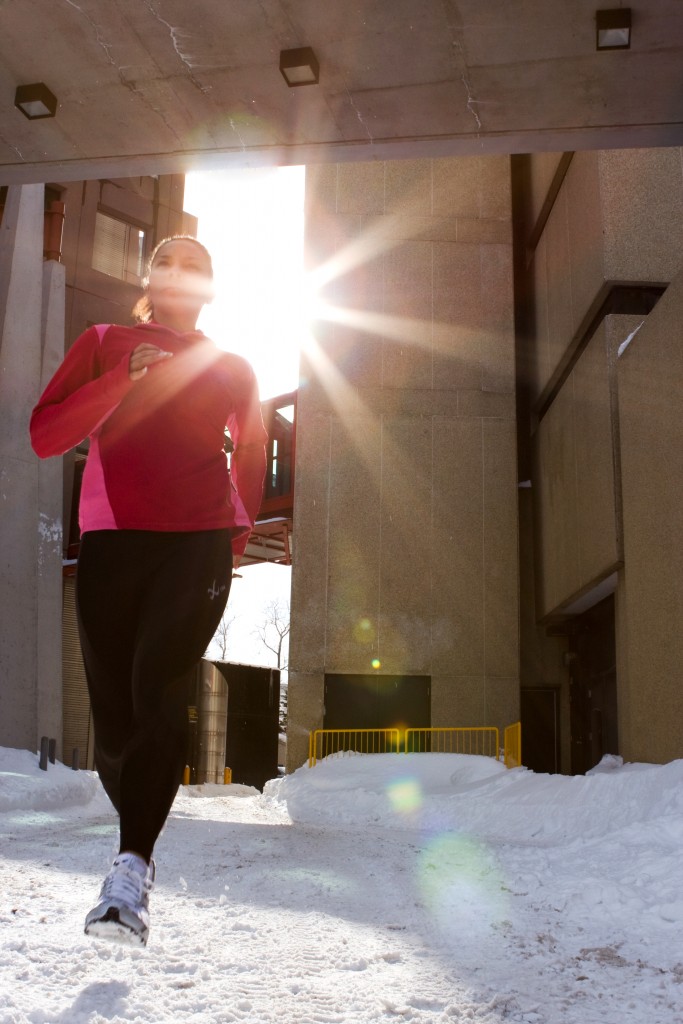Provata Health Launches Groundbreaking Virtual Reality Guided Meditation App

PORTLAND, Ore. (November 22, 2016) -- Leading digital health company Provata Health announced the launch of Provata VR, a virtual reality (VR) guided meditation app available on the App Store. The app signifies the Portland startup’s aim to pioneer a new category of digital health: Virtual Reality Preventive Care.
With Provata VR, users escape to a variety of stunning locations around the world, including tropical waterfalls, secluded beaches, dazzling Northern Lights and even underwater coral reefs. Selecting from a collection of guided meditation exercises, users train their mind to positively impact their productivity and mood in immersive, idyllic settings.
The app also introduces meditation biofeedback, a patent-pending system that leverages advances in physiological monitoring to enhance the meditation experience. Users can sync popular wearable devices, such as Apple Watch, to visualize the effects of their meditation sessions on their heart rate. Through smart feedback, Provata VR helps users better understand which meditation exercises, locations, and times of day have the greatest impact on their heart rate.
“Virtual Reality presents an opportunity to expand digital health to new frontiers,” said Alex Goldberg, CEO of Provata Health. “The typical guided meditation approach—an audio recording instructing you how to meditate—hasn’t advanced much technologically in decades. Combining VR with mindfulness meditation and biofeedback monitoring lets users transport themselves to relaxing environments while seamlessly tracking their progress, bringing new dimensions to the meditation experience.”
As mindfulness meditation grows in popularity, scientific research reveals its benefits are widespread, including increased productivity, lower stress, as well as improved focus, cognitive skills and memory. The effects extend to physiological measures as studies indicate that meditation can help to lower risk of strokes and heart attacks. Studies suggest mindfulness meditation may even alleviate chronic pain by activating brain regions associated with pain control.
Provata Health provides the first commercial digital health program proven to improve both the physical and mental health of participants in a peer-reviewed medical journal. “Given the mounting evidence of the positive effects of meditation on our mental and physical health, Provata VR truly embodies our emphasis on providing holistic digital health solutions that address our total health,” Goldberg explained.
Currently the fastest-growing private tech and healthcare company in Oregon, Provata Health partners with employers, health plans, and hospital systems to provide evidence-based programs proven to improve the health of employees and lower medical costs. Provata VR marks the company’s first product available to both employers and consumers alike.
Anyone can download the app for free and upgrade to the premium version, which will be available at no cost to employees participating in Provata digital health programs through their employer or health plan.
Watch the Video: http://provatahealth.com/vr-health#provata-vr-video
Website for the app: http://provatahealth.com/vr-health
Download the app: https://itunes.apple.com/us/app/provata-vr-guided-meditation/id1121506806?ls=1&mt=8
Link to Release: http://www.businesswire.com/news/home/20161122005302/en/Provata-Health-Launches-Groundbreaking-Virtual-Reality-Guided
HAVE TROUBLE COPING WHEN THE CLOCKS “FALL BACK?”
YOU MAY HAVE SEASONAL AFFECTIVE DISORDER AKA.. SAD

www.comprehendthemind.com
The clocks “fall back” November 6, 2016 which means that there will be less day light. Many people chalk up feeling blue in winter as simply a fact of cold weather and lack of sunshine. But 4 to 6 percent of people may have a winter depression which is clinically referred to as Seasonal Affective Disorder. Another 10 to 20 percent may have mild SAD. SAD is four times more common in women than in men. Although some children and teenagers get SAD, it usually doesn't start in people younger than age 20. Your chance of getting SAD goes down as you get older. SAD is also more common the farther north you go. For example, it's seven times more common in Washington State than in Florida. Dr. Sanam Hafeez is a neuro-Psychologist in NYC (Manhattan and Forest Hills, Queens), and treats patients in her practice who display and express mood changes once October rolls around.
Dr. Hafeez explains that, “In most cases, seasonal affective disorder symptoms appear during late fall or early winter and go away during the sunnier days of spring and summer. However, some people with the opposite pattern have symptoms that begin in spring or summer. In either case, symptoms may start out mild and become more severe as the season progresses.”
The following are symptoms to look for to see if you are suffering from SAD
Depression
Hopelessness
Anxiety
Loss of energy
Heavy, "leaden" feeling in the arms or legs
Social withdrawal
Oversleeping
Loss of interest in activities you once enjoyed
Appetite changes, especially a craving for foods high in carbohydrates
Weight gain
Difficulty concentrating
How is SAD treated?
Many people with SAD will find that their symptoms respond to a very specific treatment called bright light therapy. For people who are not severely depressed and are unable—or unwilling—to use antidepressant medications, light therapy may be the best initial treatment option says Dr. Hafeez.
Light therapy consists of regular, daily exposure to a “light box,” which artificially simulates high-intensity sunlight. Practically, this means that a person will spend approximately 30 minutes sitting in front of this device shortly after they awaken in the morning. If patients do not improve, a second exposure of 20-30 minutes may be added in the early afternoon. Treatment usually continues from the time of year that a person’s symptoms begin, such as in fall, on a daily basis throughout the winter months. Because light boxes are created to provide a specific type of light, they are expensive and may not be covered by insurance. Unfortunately, having lots of lamps in one’s house and spending extra time outside is not as effective as this more expensive treatment.
Dr. Hafeez states that, “Side effects of light therapy are uncommon and usually reversible when the intensity of light therapy is decreased. The most commonly experienced side effects include irritability, eyestrain, headaches, nausea and fatigue.”
Scientific studies have shown light therapy to be very effective when compared to placebo and as effective as antidepressants in many cases of non-severe SAD. Light therapy may also work faster than antidepressants for some people with notable effects beginning with in a few days of starting treatment. Other people may find that it takes a few weeks for light therapy to work, which can also be the case for most people who take antidepressant medications. Although not explicitly recommended, some people may elect for treatment with both light therapy and antidepressant medications. The combination of these treatments may be synergistic and a more robust way to address the symptoms of SAD.
In her practice Dr. Hafeez has found that antidepressant medications have been useful in treating people with SAD. Of the antidepressants, fluoxetine (Prozac) and bupropion (Wellbutrin) have been studied in the treatment of SAD and shown to be effective. The U.S. Food and Drug Administration (FDA) has approved these medications for treatment of major depressive disorder. Dr. Hafeez cautions that, “Any person considering treatment with an antidepressant medication should discuss the benefits and risks of treatment with their doctors.”
Individuals with a predisposition to bipolar disorder should be more cautious in approaching treatment for SAD and depression in general. Light therapy, like antidepressant therapy has been associated with increased risk of experiencing a manic episode. The specifics of this are beyond the scope of this review and again, should be discussed with one’s doctors.
Finally, a healthy lifestyle, including regular exercise, a good diet and a strong social network, is also likely to help you cope with SAD.
Sanam Hafeez Psy.D
New York State Licensed Neuropsychologist and School Psychologist
www.comprehendthemind.com
Dr. Sanam Hafeez is a New York City based Neuropsychologist and School Psychologist. She is also the founder and director of Comprehensive Consultation Psychological Services, P.C. She is currently a teaching faculty member at Columbia University.
Dr. Hafeez graduated from Queens College, CUNY with a BA in psychology. She then went on to earn her Master of Science in Psychology at Hofstra University. Following that she stayed at Hofstra to receive her Doctor of Psychology (Psy.D.) She later completed her post-doctoral training in Neuropsychology and Developmental Pediatrics at Coney Island Hospital.
Dr. Hafeez’s provides neuropsychological educational and developmental evaluations in her practice. She also works with children and adults who suffer from post traumatic stress disorder (PTSD), learning disabilities, autism, attention and memory problems, trauma and brain injury, abuse, childhood development and psychopathology (bipolar, schizophrenia, depression, anxiety, etc…) In addition, Dr. Hafeez serves as a medical expert and expert witness by providing full evaluations and witness testimony to law firms and courts.
Dr. Hafeez immigrated to the United States from Pakistan when she was twelve years old. She is fluent in English, Urdu, Hindi and Punjabi (Pakistani and Indian languages.) She resides in Queens, New York with her husband and twin boys.




